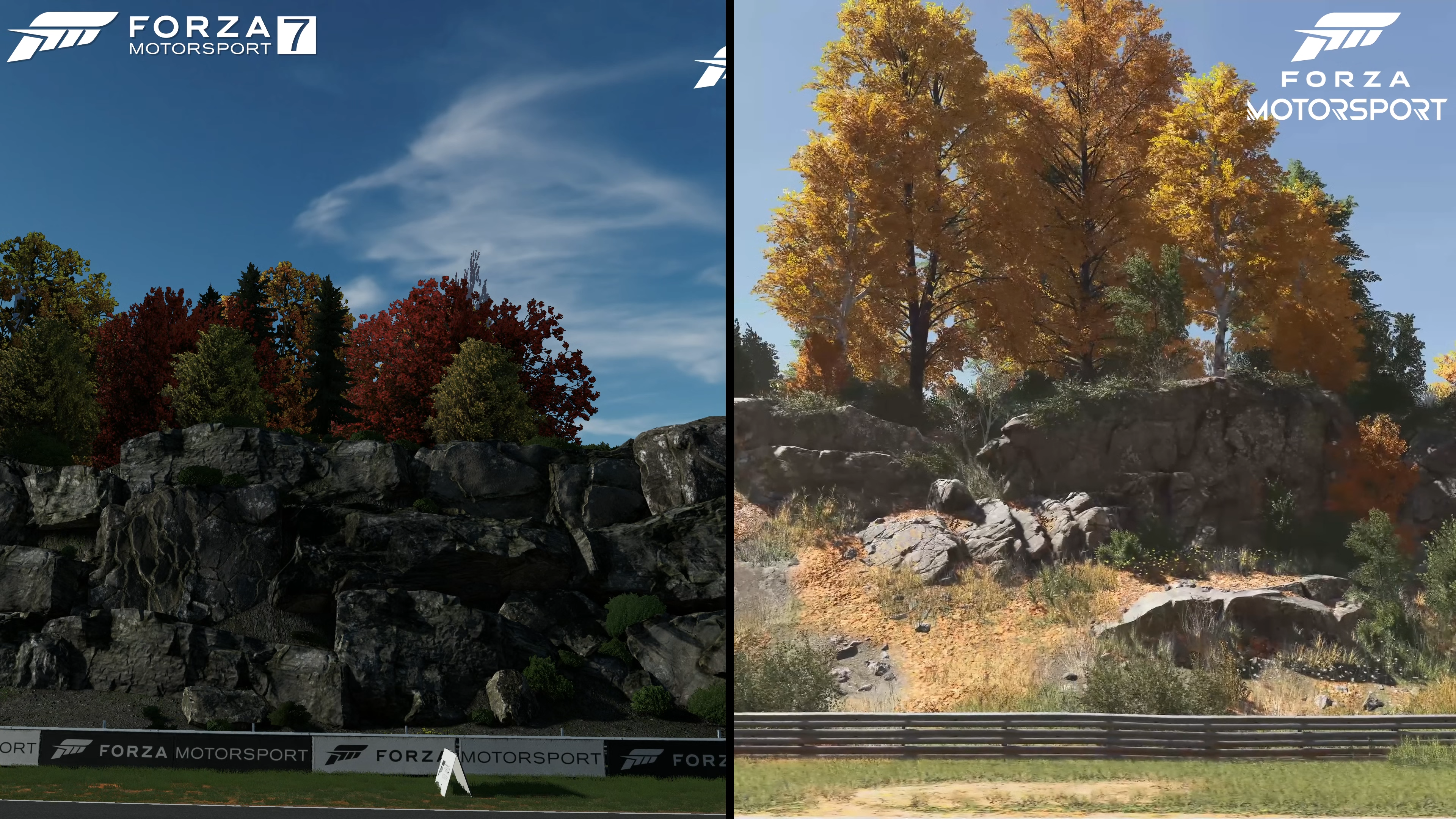Almost five years after the final installment in the series, there’s finally concrete information about the new Forza Motorsport coming next year. While the eighth game in the series drops the number from the title, the presentation was all about the numbers: 4K resolution and 60 frames per second with real-time ray tracing, twice the framerate shown in the 2020 teaser. Playing games in 4K at 60 frames per second with RT is a big challenge even for high-end PCs. So how can something like this be possible on Xbox Series X?
To find out, we took a look at the two teaser trailers released so far, which Microsoft’s blog says were shot on PC but were “also tested on Xbox Series X for the same visual quality” — oddly enough.
Analysis of the footage reveals some tell-tale signs of optimizations aimed at providing the GPU headroom to enable in-game RT, starting with resolution and image quality. Previous Forza Motorsport titles have targeted native resolutions at 4x MSAA, but the new trailers show aliased geometric edges that are incompatible with multi-sampling. This suggests that we might be dealing with a less sophisticated anti-aliasing technique. Likewise, the game doesn’t appear to be targeting native 4K, with pixel counts clocking in at 1080p in some scenes but 4K in others. There are also cases where recently appeared objects on the screen show a telltale pattern of pixels. These could be explained by some level of image reconstruction, Variable Rate Shading (VRS) or perhaps TAA.
These techniques make 4K 60fps with RT a more realistic goal, but perhaps this 4K should have an asterisk next to it. This isn’t new to the console world, but it’s definitely a new approach for Turn 10 and Forza Motorsport.
The trailers also hint at some of the settings the developers could use to make real-time ray tracing more realistic. I suspect the Turn-10 team chose a specific type of RT reflection to keep requirements low, namely using coherent, mirror-like reflections instead of more subtle and realistic glossy reflections. This has a huge impact on performance, while testing the game Ghostrunner on PC I found that using mirror-like instead of glossy reflections saves 10ms on an RDNA2 graphics card. That’s 60 percent of the frame time of a 60fps game, a massive amount. Evidence of the use of this RT setting comes in the five-minute trailer, which features materials with either mirror-like reflections or no reflections at all.
Interestingly, however, the other trailer – the one-minute Sizzle Reel – looks very different. It shows a lot of diffuse reflections which Turn 10 recently confirmed are the result of ray tracing global illumination (and obviously better quality RT reflections) in the replays, garage and photo modes. That’s great from a technological point of view, but calling it “4K footage from the game” when it comes to replay cameras seems a little over the top when it comes to transparency to fans. Especially when the other trailer based on gameplay fidelity shows no RTGI and less impressive reflections despite being labeled the same way. It also raises the question for the PC version: will those with powerful enough machines be able to enable RTGI and higher quality RT reflections in real gameplay as well? Hopefully we’re not seeing an arbitrary restriction here, but we saw that in Forza Horizon 5, where RT was disabled in-game. Even if you have the hardware to handle the extra GPU load.


In addition to the strategies that make 4K and 60fps possible with RT, the demo also shows changes to Forza designed to take advantage of the newer hardware on PC and Xbox consoles. A big change is a dynamic time of day system that requires the game to be relit in real time. This is something that would have caused a massive drop in performance on previous consoles. On-track detail has also been significantly improved, with more spectators, objects and even actual 3D trees with individual branches and real-time proper shadows. Zooming in on a shot of a road with cones, improvements can be seen in the shading model, which has many more material variations. While the road and cone had a similar texture in FM7, each is now shaded differently, and the cone’s plastic even includes the simulation of subsurface scattering: the thinner areas of the plastic let light through. Given such differences in detail, I’m very curious how other aspects of the game are detailed and shaded, such as crowds or pit crews.
It’s clear that there are significant and meaningful improvements in image quality here, worthy of a 2023 release. There are also clever optimizations that make 4K and 60 fps with RT reflections conceivable for PC and consoles.
However, some questions remain about the Xbox Series X version of the game. Does it offer similar picture quality and performance as the PC version, or are bigger compromises required? Also, the Xbox Series S version is explicitly advertised with real-time RT. What does it look like and how is it going? It will be exciting to answer these questions as we learn more about the game.
Originally written by Alex Battaglia, Video Producer, Digital Foundry
The post Forza Motorsport: Is 4K and 60 fps possible with ray tracing on the Series X? appeared first on Gamingsym.
